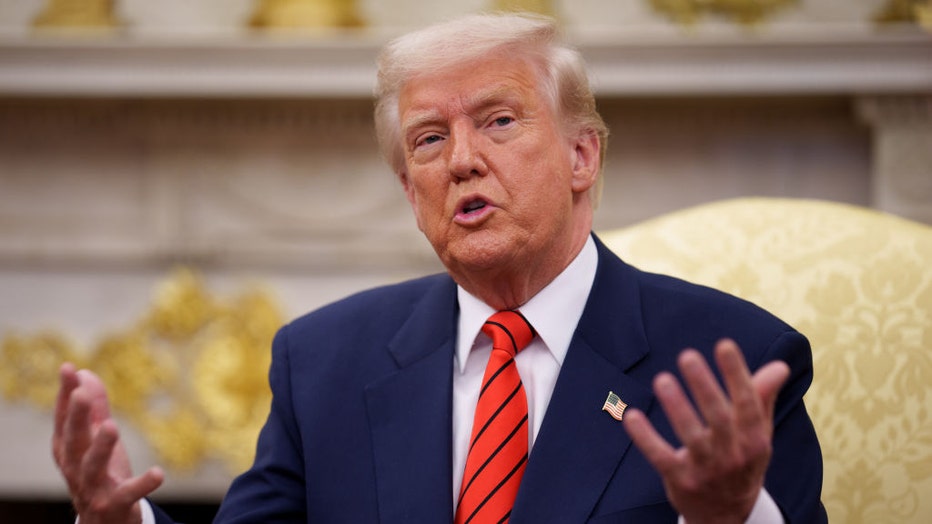Trump signs executive order directing feds to list so-called sanctuary cities

White House: Border security achieved in first 100 days
President Donald Trump marks the first 100 days of his second presidential term this week. White House Press Secretary Karoline Leavitt spoke with members of the media on Monday to discuss the progress made with the administration's border policies.
WASHINGTON - President Donald Trump on Monday signed executive orders related to immigration, including one that requires English-language proficiency for commercial motor drivers, such as truckers. Another order will direct state and federal officials to publish lists of "sanctuary city" jurisdictions, or places where local authorities often don’t cooperate in enforcing federal immigration regulations.
Trump signed the two executive orders on immigration on Monday as he approaches 100 days in office on April 29. These orders will expand law enforcement operations to make it easier to detain migrants.
Trump signs 2 executive actions on immigration as his 100-day mark approaches
Dig deeper:
One of the orders signed by Trump orders states and federal officials to publish lists of jurisdictions often referred to as "sanctuary cities" that limit cooperation with federal officials’ efforts to arrest immigrants in the country illegally.

FILE-President Donald Trump speaks during a meeting with NATO Secretary General Mark Rutte in the Oval Office of the White House on March 13, 2025 in Washington, D.C. (Photo by Andrew Harnik/Getty Images)
White House press secretary Karoline Leavitt told the Associated Press that "sanctuary" cities have worked to "obstruct" enforcement.
RELATED: White House mugshots: ‘Arrested’ posters line lawn as Trump marks 100 days in office
Reuters reported that a federal judge blocked Trump’s administration from withholding federal funding from more than a dozen so-called sanctuary districts that have declined to cooperate with Trump's hardline immigration crackdown.
What they're saying:
"We are in the beginning stages of carrying out the largest deportation campaign in American history," Leavitt said during a Monday morning briefing with reporters.
On Monday, the White House displayed signs of 100 people arrested by Immigration and Customs Enforcement, including their photographs and listing crimes they had allegedly committed, to mark Trump’s first 100 days in office.
A second order signed by Trump calls for increasing access to excess military for state and local law enforcement. It also calls for bolstering legal support for officers accused of wrongdoing while carrying out their official duties.
Trump directs the office of Attorney General Pam Bondi’s "to create a mechanism to provide legal resources and indemnification to law enforcement officers who unjustly incur expenses and liabilities for actions taken during the performance of their official duties to enforce the law."
What are sanctuary cities?
The backstory:
Sanctuary cities refer to states, counties or cities that put some limits on how much they are willing to cooperate with federal agencies’ efforts to deport undocumented immigrants.
RELATED: US citizen children deported with their mothers, lawyers say
The New York Times reported that local governments started to embrace sanctuary policies in the 1980s when churches offered shelter to people escaping civil war in El Salvador. The practice has garnered attention over the last 10 years, as immigration has become a larger issue for constituents.
Reuters reported that President Donald Trump has denounced cities and states that limit cooperation with federal immigration enforcement, labeling them "sanctuaries" and blaming them for releasing criminal offenders instead of coordinating their transfer to ICE.
The Source: Information for this story was provided by the Associated Press, Reuters and the New York Times. This story was reported from Washington, D.C.

